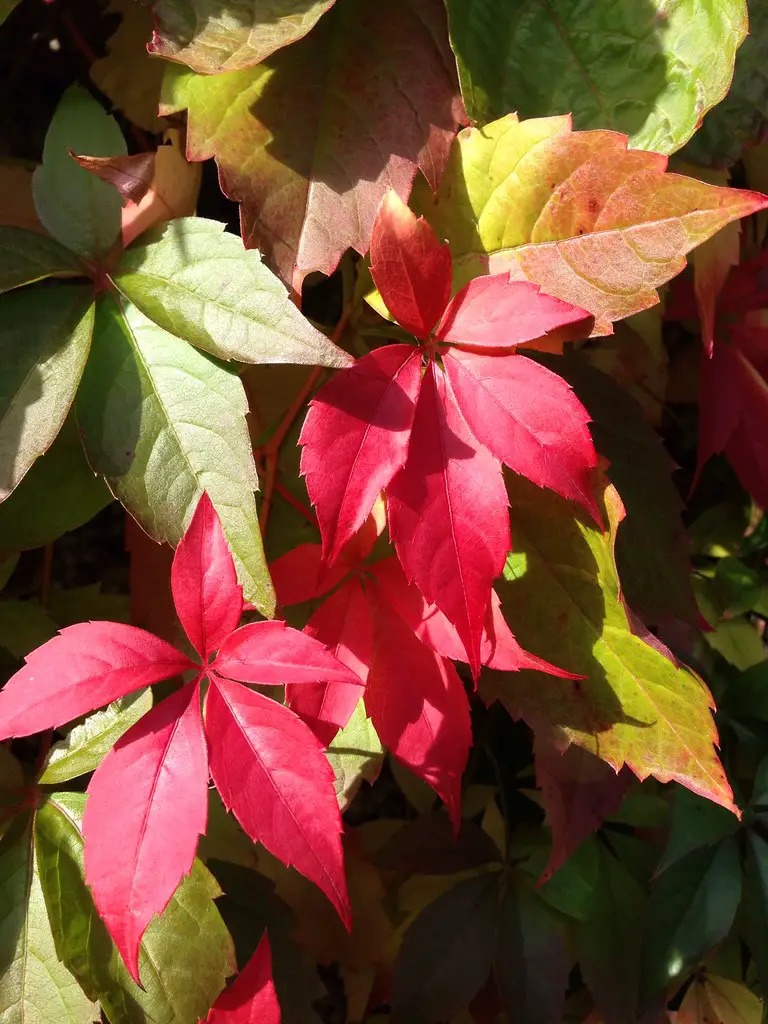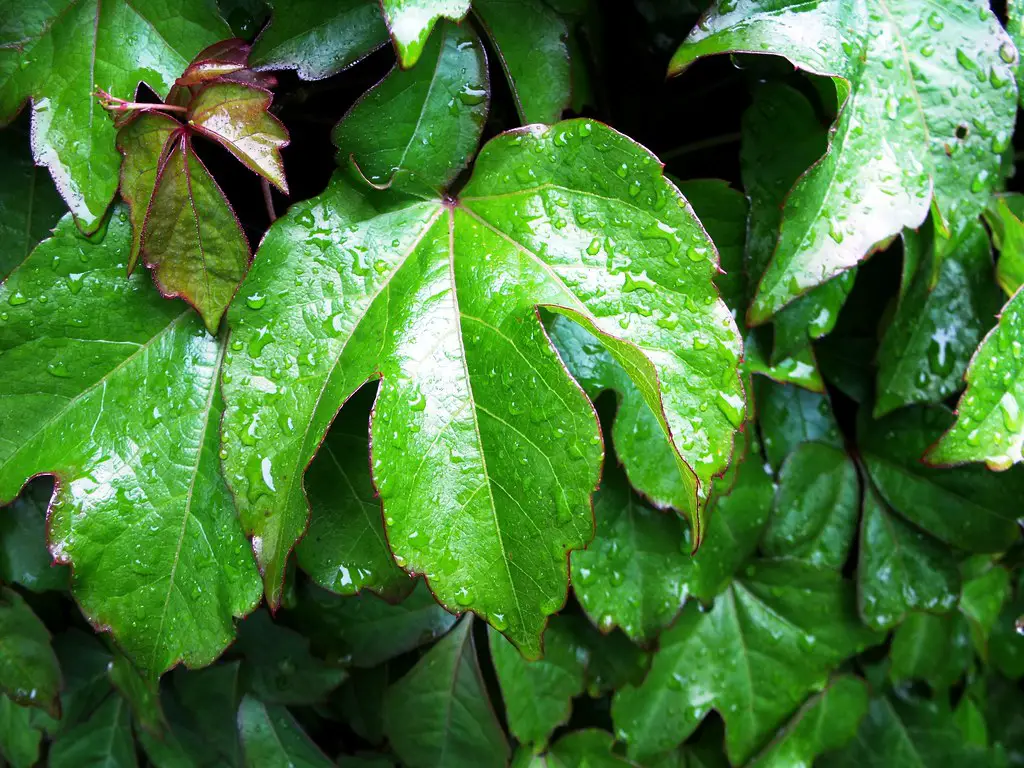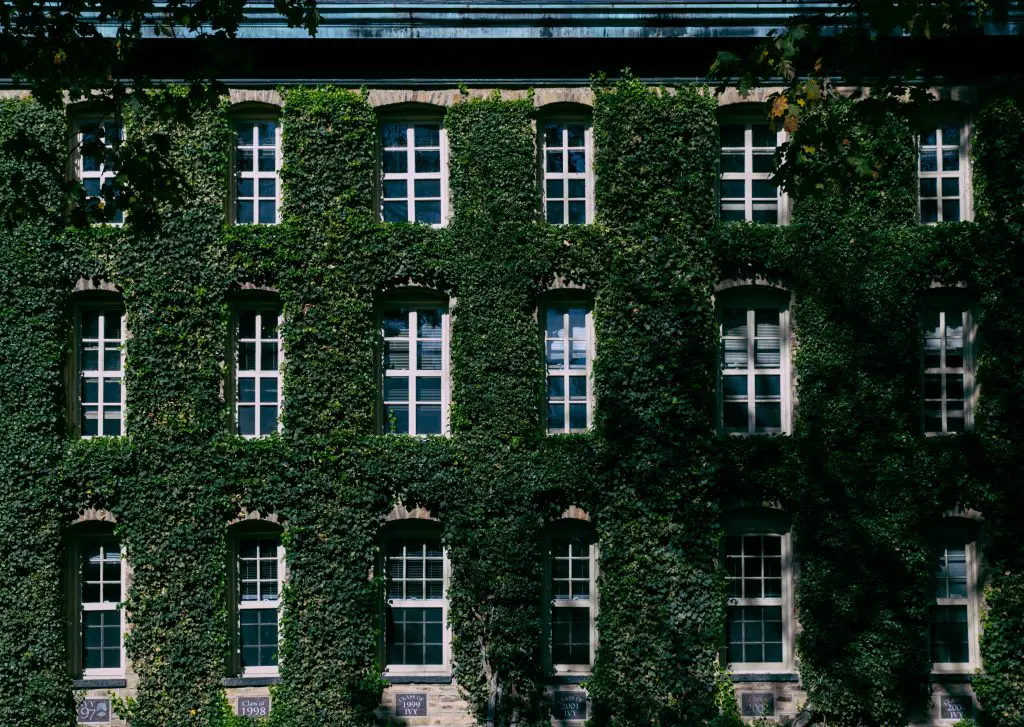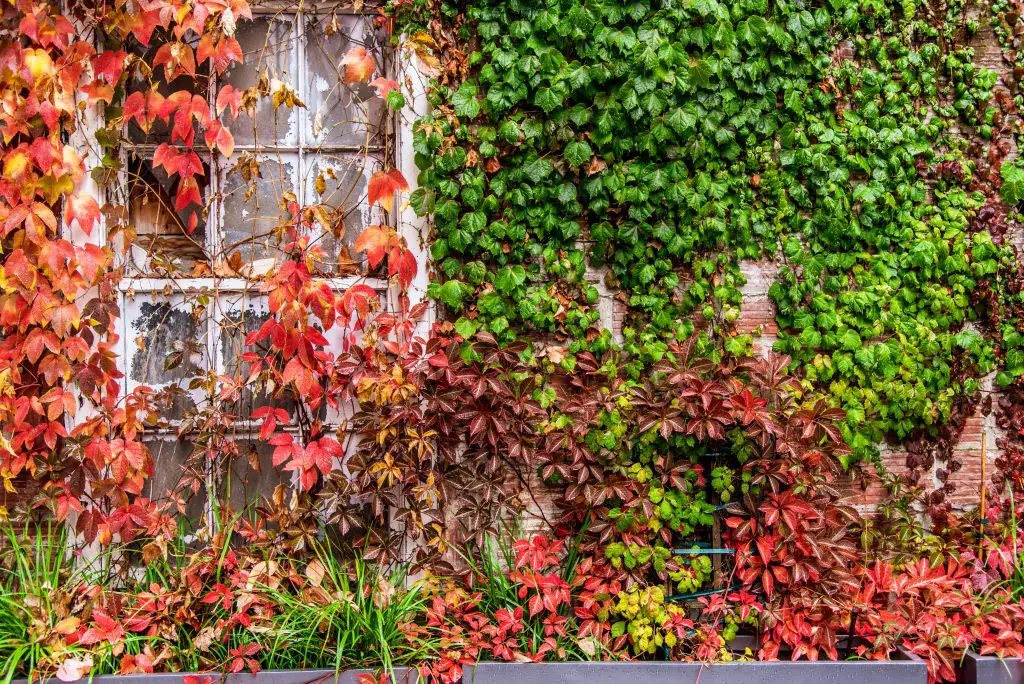Is Virginia Creeper The Same As Boston Ivy? Virginia creeper and Boston Ivy have a similar appearance. Both are deciduous vines that are often used to grow over the walls of buildings. But are they just two names for the same plant?
Virginia Creeper and Boston Ivy are two distinct species that have a similar appearance because they are closely related to each other. Both these plants belong to the grape family and are creeping vine plants that are deciduous have attractive foliage that changes to a bright red color in Autumn. However, they have a different leaf configuration that can be used to tell them apart.
Virginia Creeper has a compound leaf that has 5 leaves coming from a central point. An example of the leaves is shown in the image below.

Whereas Boston ivy has a single leaf with three fingers on it. These fingers will point downward providing a distinctive pattern that is seen on many of the buildings at Ivy League universities. An image of the leaf shape is provided below.

About Boston Ivy
Boston Ivy, Parthenocissus tricuspidata, is a species that is best known for being used on the walls of building in ivy league universities, hence the name. However, the plant originated in Japan, on the Korean peninsula, and in the northeastern parts of China. It is also commonly referred to as grape ivy, and Japanese ivy though it is not related to true ivy.
The plant itself is noted for having smaller leaves than other species in the Parthenocissus genus. Like most climbers, it is a fast-growing and vigorous climber that is deciduous. The leaves on the plant are approximately 6 inches wide and have a three-lobed configuration.
The leaves are approximately 6 inches (15 cm) wide and are deep green in color before they turn a brilliant shade of red and burgundy in autumn. The plant also produces greenish-white flowers in late spring to early summer however the plant is generally not noted for this because they are usually hidden by the foliage.
In addition to producing flowers, the plant also produces fleshy, blue-black berries that are only visible in Autumn after leaves have fallen off the plant. As mentioned earlier in the article the plant is most commonly used as a climber on walls however is also an excellent ground cover.
The plant also has the added advantage of being self-clinging as its tendrils have tips that are capable of clinging to most surfaces which means that a support structure is not required. However, it is important to note that due to the highly adhesive nature of the vine it can sometimes be difficult to remove.
The tendrils will not penetrate the surface of the wall, however, removing them from the wall once attached is near impossible without taking some of the wall with it. But despite this limitation, the plant still received the Award of Garden Merit from the Royal Horticultural Society in the UK.
How To Grow Boston Ivy
The plant is generally easy to grow and will tolerate a wide range of conditions. The vine can be grown in all light conditions and will even tolerate complete shade. However, these vines will not develop the same degree of color in the fall if they are grown in complete shade.
Additionally, Boston ivy will benefit from some shelter in locations that experience extreme summer temperatures. In these areas, it is preferable to plant on east-facing walls which only get the morning sun.
In terms of soil conditions, Boston ivy prefers rich, moist but well-drained soil. However, the plant is generally tolerant of most soil conditions and will even cope with high levels of urban pollution.
The climate zones that Boston ivy can be grown are 4 to 8. However, in cooler locations where the plant is exposed to cold winds, it can be permanently damaged if the temperatures get below 10F. Additionally, in these cooler climates, it is not uncommon for the new growth to be damaged by late frosts. However, due to its vigorous nature, it will recover quickly.

How To Plant Boston Ivy
It is best to plant Boston ivy in spring after the last frost. When digging the planting hole it is advisable to add compost to the surrounding soil to ensure that the plant has adequate nutrients. Once the plant is in position it is advisable to apply a thick layer of mulch to ensure that the soil remains moist.
In the first season when the root system is not fully established it is important to water the plant regularly to ensure that the soil remains moist. After this period the plant is will become reasonably drought tolerant.
In terms of fertilizer, it is not really required as the plant is vigorous and generally doesn’t require any additional assistance. However, some people apply a fertilizer high in phosphorus as it encourages root development.
The main maintenance job with this plant is to ensure that it is trimmed regularly to ensure that you control where it grows as the plant can grow to 30 to 50 ft (9 to 15 m) tall. As it is vigorous do not allow the plant to grow on trees as the vine will eventually smoother the tree.
About Virginia Creeper
Virginia Creeper, Parthenocissus quinquefolia, like Boston Ivy, is a fast-growing, deciduous climber that produces green leaves in spring and summer that change to a bright red color in Autumn. This change occurs usually earlier than Boston ivy.
The plant is a five-leaved ivy that is native to the US, Canada, and Mexico it generally has a wider temperature tolerance than Boston ivy and is suitable for growing in zones 3 to 11.
Like Boston ivy, it does produce flowers and berries that are hidden for much of the season by the plant’s foliage. It is most commonly used as a climber on walls but is also suitable as a ground cover.
The Virginia Creeper will also adhere to the wall without the aid of a support structure however the level of adhesion is not as high as Boston ivy. This plant is known to climb walls and then fall off them if the weight of the plant gets too high. To avoid this problem it is necessary to trim the plant mid-way through the growing season.

How To Grow Virginia Creeper
Virginia creeper, like Boston ivy, is a relatively easy plant to grow as it is tolerant of a wide range of conditions and is generally suitable for most conditions. It performs well in full sun and full shade.
In terms of soils, like most plants, it prefers rich moist soils that are well-drained. However, this species can also tolerate drier conditions that include coastal conditions and alkaline soils.
The plant also spreads rapidly and will put down new roots at any point where the vine comes into contact with the soil. So the main job associated with this plant is keeping it under control.
When planting Virginia creeper for the first time ensure that you select a moist location for it. To help the plant to establish quickly it is advisable to add a bag of compost to the soil.
Once the plant is in the ground mulch the surrounding area to ensure that it remains moist. In the first season, it will need to be watered regularly to ensure it does dry out. After this period the plant can largely be left to its own devices.
The plant will need to be trimmed once or twice a year to keep it under control as it is classified as an invasive species in places like the UK. It is also important to note that the plant’s berries are toxic as they contain oxalic acid the same compound that is in rhubarb leaves. Care should be taken if you have children living nearby.
Relevant Articles
How To Tell The Difference Between Lavender And Russian Sage (Are They The Same?)
Is Catmint Invasive? Will I Regret Planting It?
Can Snowdrops Be Purple or Blue? Or Is There A Similar Looking Flower?
Are Zinnia And Dahlias The Same Plant? What’s The Difference?
